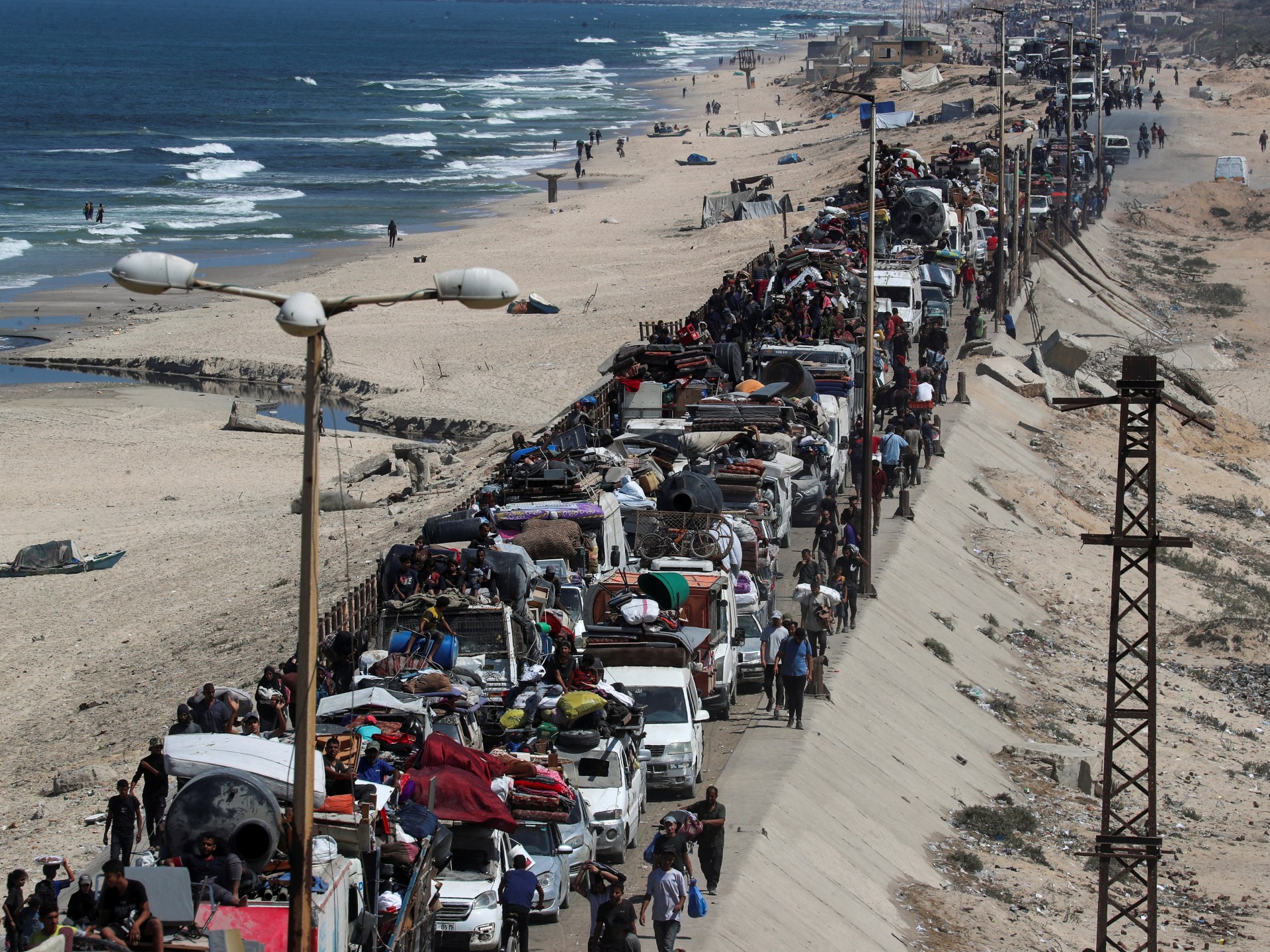The European Commission, the European Union’s main executive body, has presented a much anticipated and delayed proposal to “suspend certain trade-related provisions of the Association Agreement between the EU and Israel” in response to Israel’s war on Gaza.
The sanctions, however, do not currently have enough support among the EU’s 27 member countries to pass. The proposals announced on Wednesday also included suggested sanctions on “extremist” Israeli ministers and violent settlers as well as on Hamas.
Recommended Stories
list of 3 itemsend of list
Kaja Kallas, the EU’s foreign policy chief, urged the member nations to increase tariffs on some Israeli goods and impose sanctions on 10 Hamas leaders, Israeli settlers, and two far-right members of Prime Minister Benjamin Netanyahu’s Cabinet: National Security Minister Itamar Ben-Gvir and Finance Minister Bezalel Smotrich.
The commission also said it was pausing its bilateral support to Israel with the exception of support to civil society and Yad Vashem, the World Holocaust Remembrance Center.
“The proposals follow a review of Israel’s compliance with Article 2 of the Agreement, which found that actions taken by the Israeli government represent a breach of essential elements relating to respect for human rights and democratic principles. This entitles the EU to suspend the Agreement unilaterally,” the commission said.
“Specifically, this breach refers to the rapidly deteriorating humanitarian situation in Gaza following the military intervention of Israel, the blockade of humanitarian aid, the intensifying of military operations and the decision of the Israeli authorities to advance the settlement plan in the so-called E1 area of the West Bank, which further undermines the two-state solution,” it added.
European Commission President Ursula von der Leyen said: “The horrific events taking place in Gaza on a daily basis must stop. There needs to be an immediate ceasefire, unrestrained access for all humanitarian aid and the release of all hostages held by Hamas.”
“Reflecting these principled commitments and taking into account serious recent developments in the West Bank, we propose to suspend trade concessions with Israel, sanction extremist ministers and violent settlers, and put bilateral support to Israel on hold without affecting our work with Israeli civil society or Yad Vashem,” von der Leyen added.
Late last month, foreign ministers from across the EU tussled in Denmark’s Copenhagen over what action to take in response to Israel’s punishing war on Palestinians in the Gaza Strip and heavy crackdown in the occupied West Bank as the bloc’s aid chief urged them to “find a strong voice that reflects our values and principles”.
Growing numbers of protesters have taken to the streets across Europe in recent months to demand action from their governments to pressure Israel to end its war on Gaza, which a United Nations inquiry on Tuesday found to be genocide.
But the EU so far has failed to agree on a unified course of action to pressure Israel to end its bombardment and blockade of Gaza.





